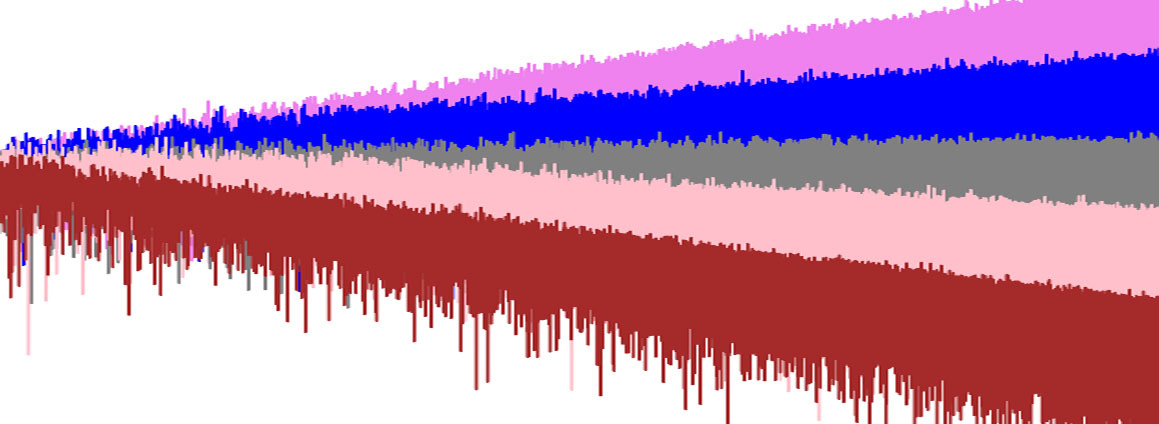The Colors of Noise
Different kinds of static have distinctive tones

You’re probably familiar with white noise generators, which insomniacs often find useful as a sleep aid. White noise is a blend of random frequencies with a flat spectrum — any frequency band has the same amount of power as any other. I find white noise to be sharp and harsh. Here’s an example of white noise (warning — it’s loud).
Most white noise generators don’t actually play white noise — they play a “colored noise” that’s more soothing. Colored noises have a blend of random frequencies but some frequencies play at a higher volume than other frequencies. This gives the noise a “color” or distinctive tone. Here are samples of some common colored sounds:
Pink noise differs from white noise — every octave contains the same amount of energy, rather than every frequency band like in white noise. It’s not as sharp as white noise. It’s richer, deeper. It sounds like a rushing river.
Brown noise’s power drops as the frequency increases. It sounds like pink noise off in the distance. It’s lush and chocolately. I find it to be the most pleasant of all colored noises.
Blue noise’s signal power increases with higher frequencies. It sounds like air escaping from an inflated tire. It’s startling rather than soothing.
Violet noise is like blue noise but the power increases more sharply as the frequency increases. It sounds like a thinner version of blue noise.
Grey noise is designed to fit a psychoacoustic equal loudness curve “giving the listener the perception that it is equally loud at all frequencies.” I could probably fall asleep to grey noise, but it’s not as velvety as brown noise.
Black noise is silence. Here’s 10 hours of it.
Wikipedia has a good article about the colors of noise with examples for each one.
This is the free issue of The Magnet. Here’s a preview of this week’s subscriber issue, which has items about Vintage magic zines, sketchbook creatures, a magical realism bot, and more.
